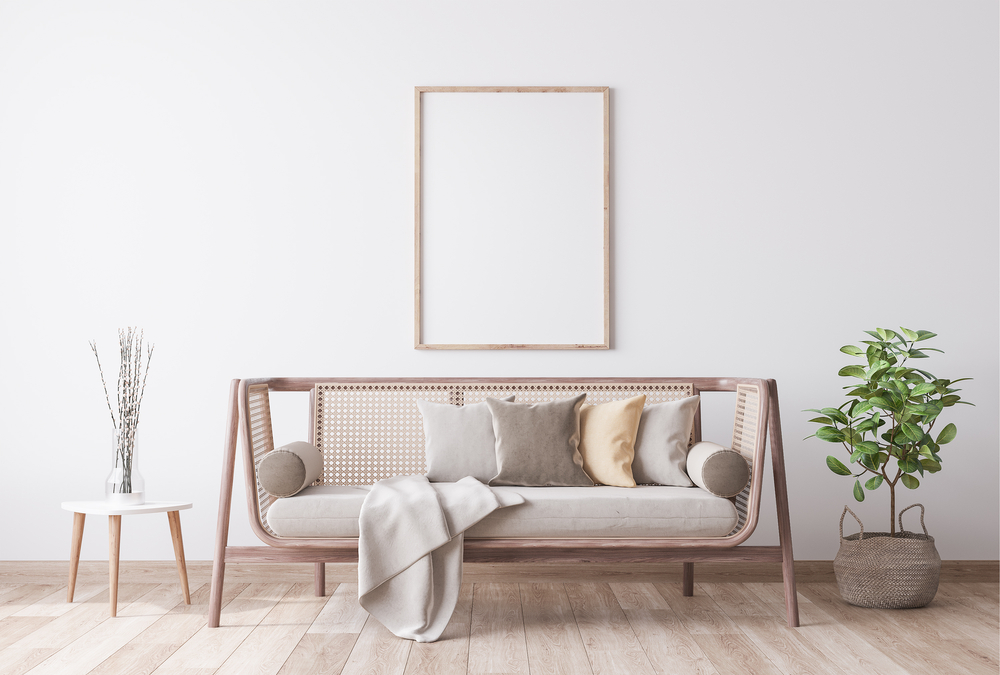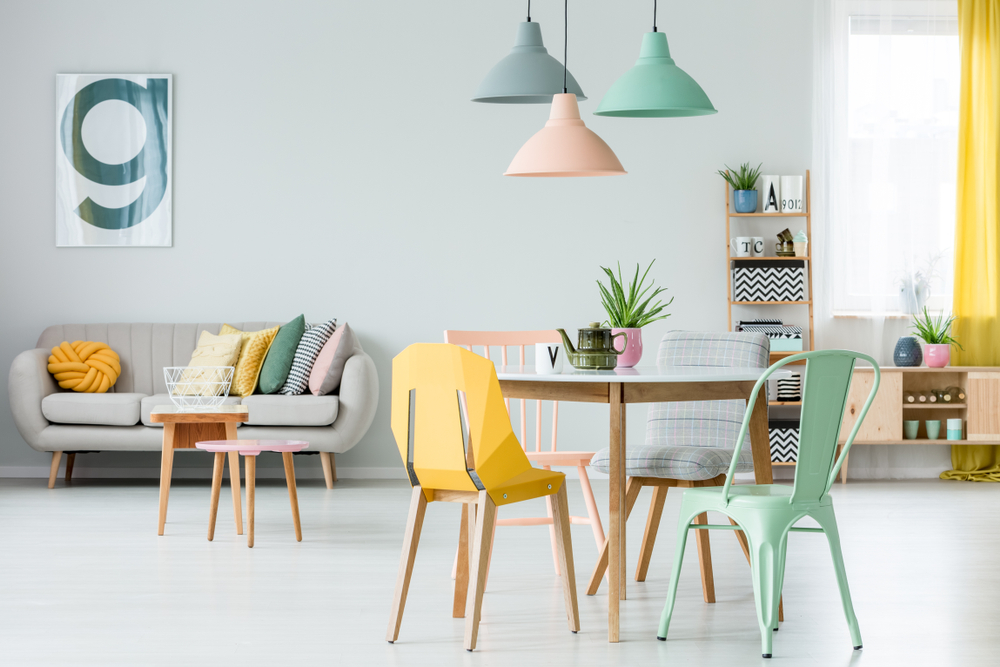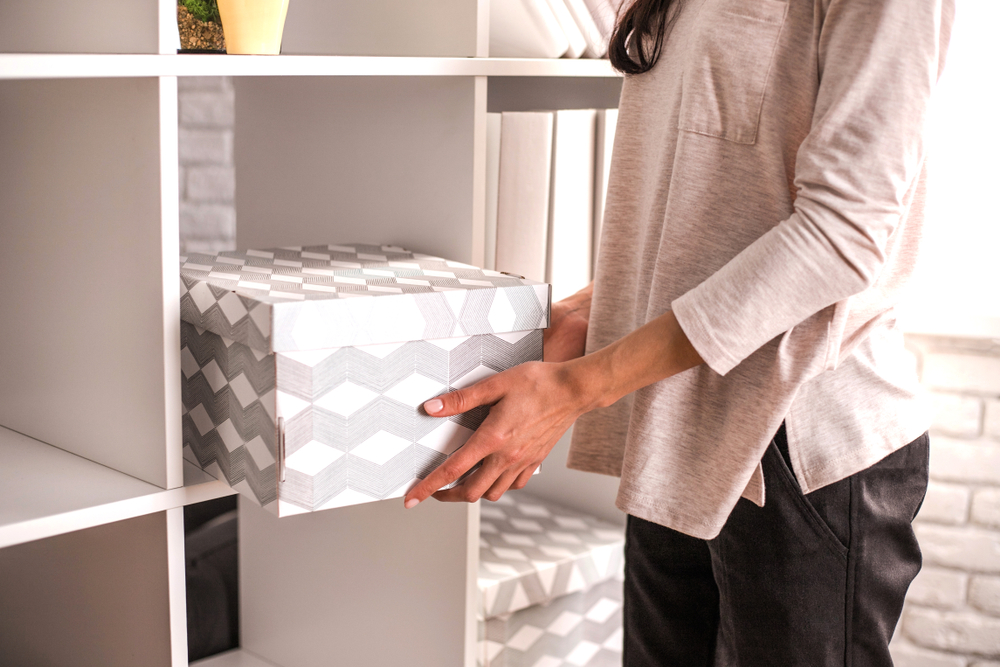From tiny houses in the wilderness to shoebox-sized urban studios, plenty of people are living in smaller dwellings today. And while there’s a lot to like about the snug feel of small spaces, they often need a little bit of careful decorating to prevent them from developing a cramped feeling.
Don’t worry, though — you don’t have to be a professional decorator to know how to create a gallery wall, use mirrors in your decorating or use low-profile furniture. These, and other tools and techniques, provide surprisingly simple methods that can help you make a room feel more spacious.
Ready to infuse your small space with a big personality? Our seven tips below will show you how.

1. Choose low-profile furniture
Furnishing your space with lower-profile pieces is one easy way to create a roomy feel. Compare two couches with the same floor footprint but different heights and the taller couch will always appear to occupy more space. This holds true for other furniture as well, and it’s an important element of choosing furniture for a small room.
The mid-century modern style is one that includes a lot of low-profile designs, so it’s a good place to start looking. Simplicity is another good quality to look for in your furniture selections for a small room, as furniture with a cleaner and more minimal design will help you keep the room’s level of visual stimulus manageable.
2. Keep rugs, curtains and drapes simple or eliminate them altogether
Reconsider that huge Persian rug with the complex design. In small spaces, a large, busy rug can feel overwhelming and take up too much visual real estate. One or two small rugs with elegant designs can still look great in a small space, depending on how they’re used. But many people designing for small spaces opt to do away with rugs entirely
Many of the same considerations apply to curtains and drapes. First, they absorb light and occupy visual space even when they’re open. Second, they obstruct your view of the outdoors, which is a surprisingly important part of creating a roomy space. Just being able to see out a window, even if the view isn’t spectacular, is an effective way to make a room seem more spacious.
3. Loft your bed
Remember that thing we just said about low-profile furniture? Well, forget about it for right now because we’re going to talk about loft beds. If you’re working with a small bedroom area, a loft bed might be exactly what you need to give yourself some space for other furniture, like a home office area or a couch.
Naturally, you’ll need to do some due diligence to make sure the room can accommodate a loft bed. Figure out if you’ll have enough distance between the bed and the ceiling to avoid an uncomfortable sleeping experience, and please make sure your bed won’t be near a ceiling fan! Don’t forget that you’ll also need the same things that any bed requires, so see if you can add a wall-mounted nightstand for the necessary late-night drinks of water and phone chargers.

4. Lighten up your colour palette
The general rule about colours is that lighter ones will make your room feel airier and more spacious. Paler colours allow light to reflect around the room and give the human eye an impression of being inside a larger space. A combination of white walls and white ceilings is an unbeatable choice for pure space and breeziness.
If all white is too stark for you, consider an off-white colour or breaking up your white walls with some colourful wall decorations. For a really bold statement, think about grabbing some peel and stick wallpaper to create an easy accent wall. Furniture with slightly darker colours can also offer a great contrast to lighter walls.
5. Create a gallery wall
What about wall decorations? Generally, you’ll want to avoid anything very large that will occupy too much space and attention (sorry, taxidermied moose head). Instead, consider opting for a gallery wall decorative scheme that combines multiple smaller pieces into an elegant ensemble.
OK, but what should go on your gallery wall? The answer is “pretty much anything you want,” as long as it’s not too large. A standard 8.5×11 sheet of paper or below is a pretty good benchmark for gallery wall pieces in a small room. You can also choose one larger piece that goes near the centre and cluster other smaller pieces around it, which will provide an attractive contrast.

6. Add one or more mirrors
Mirrors are one of the oldest and most reliable tricks around when it comes to decorating small spaces. Their reflective properties can subtly influence people to perceive a room as larger than it actually is. Look, all we’re saying is that there’s a reason magicians use them, OK?
What’s more, mirrors are versatile. Each different type of mirror has its own properties that can convey different spatial illusions. Full length mirrors, for example, are good at making your ceilings seem extra-tall. Small face mirrors can make an excellent component of a gallery wall. And a long, skinny mirror mounted on a wall can make that wall appear substantially longer.
7. Show clutter no mercy
Clutter will clog up a room’s space and energy faster than just about anything else. That means that keeping your space clean and clutter-free will be one of your most important tasks in developing its spacious character.






